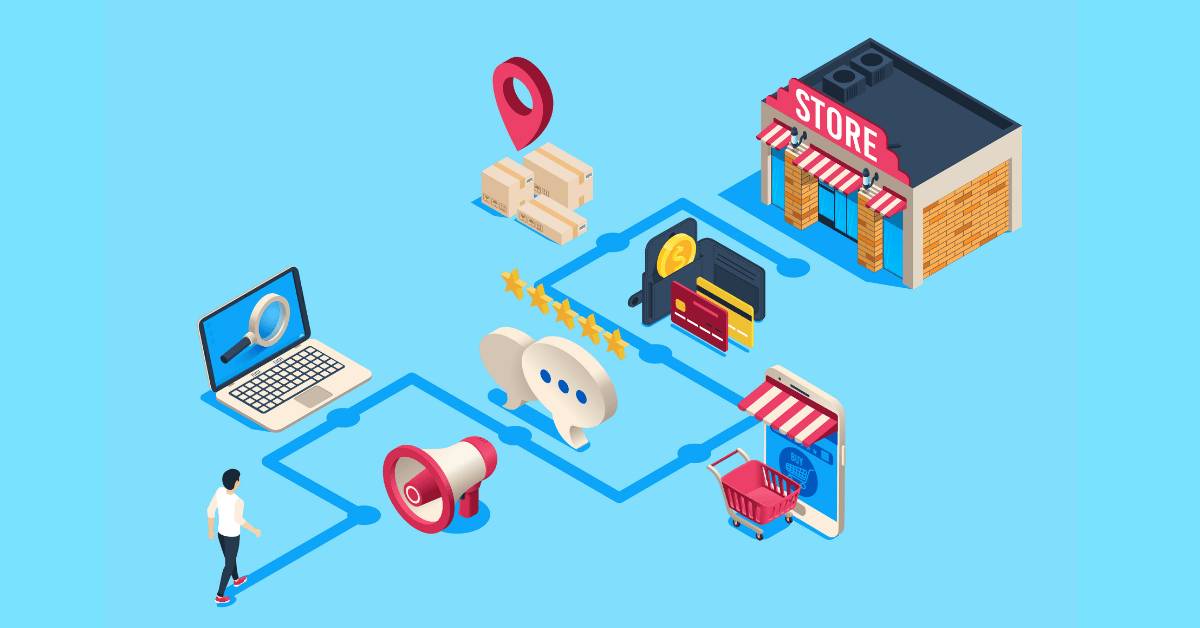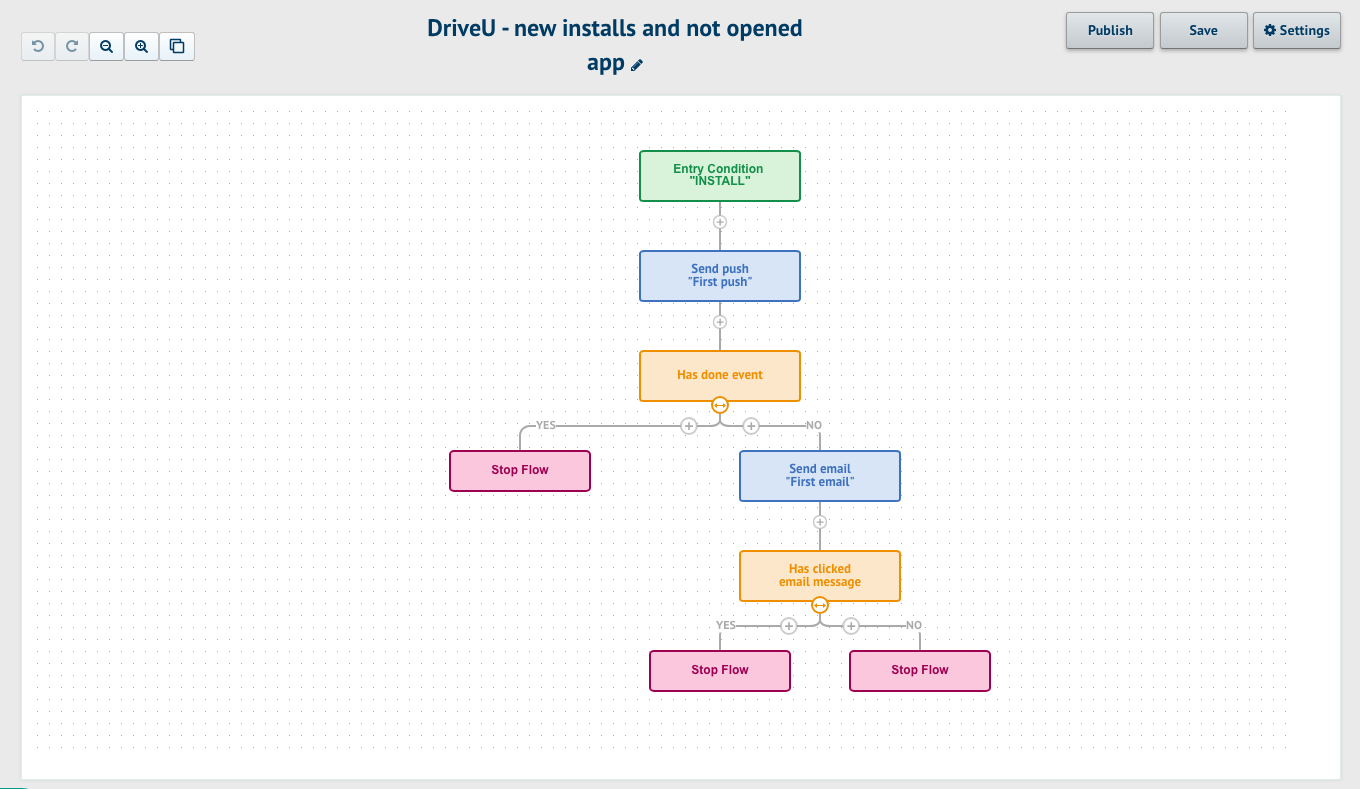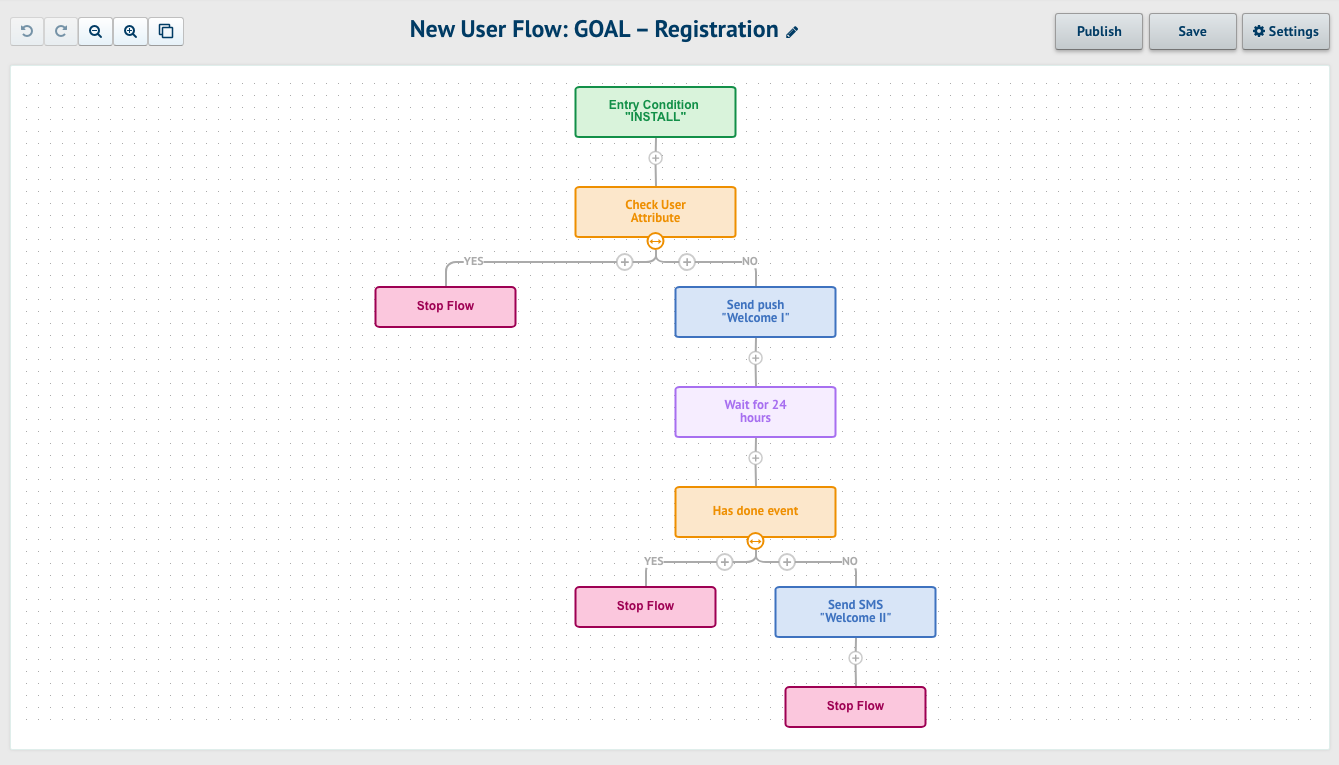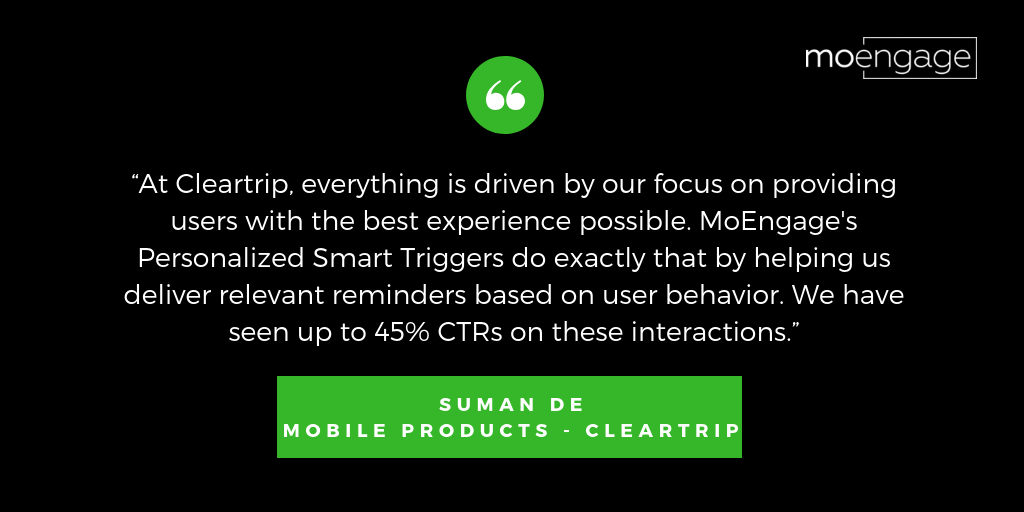Losing App Users to Churn? Here’s How You Can Reduce App Churn Rate

Reading Time: 5 minutes
Consumers love to download and install apps on their devices! In 2018, consumers downloaded 205.4 billion mobile apps. In 2022, this figure is expected to increase to 258.2 billion. Social media apps like Facebook are some of the most commonly installed ones, as are games and messaging apps. But with the number of apps to choose from numbering in the millions, consumers have their pick—and you have plenty of opportunities to create an app targeted to your customers to drive engagement and sales.
But there’s a downside to this plethora of apps and downloads: user churn. Consumers are downloading lots of apps, but they aren’t all using them—or keeping them.
The good news is you can take steps to help make sure your app is one they do keep, interact with and buy from.
| Bonus Content
👉 Customer Engagement During Crisis Playbook [Download Ebook] 👉 Customer Lifecycle Marketing Campaigns: An In-depth Guide for 2021 [Download Ebook] 👉 Customer Lifecycle Marketing Campaigns: An In-depth Guide for 2023 and Beyond – [Read Blog] |
The mobile app user churn
User churn is a real challenge for those businesses trying to drive customer loyalty and sales with mobile apps. Although it varies by country and by industry, the average uninstall rate is 28% within the first 30 days. That means almost one-third of those users you worked so hard to woo, those users who said “yes” and installed your app, are changing their minds and uninstalling before the end of the month. The reasons for uninstalling can range from needing more space on their device to unfulfilled promises on the part of the app provider.
Don’t think those who stick around past the 30-day mark are loyal fans, however. The churn rate reaches 71% within 90 days.
Then there are those inactive users: Some people don’t bother to uninstall—but they don’t bother to use the app either. About one-fifth only interact with an app once after installing it.
Where (and why) are they dropping out?
For those who do keep an app installed, they aren’t likely to convert. Despite the prevalence of mobile devices, consumers are still much more likely to convert on a desktop or laptop computer than a smartphone, and mobile app developers need to figure out why. Consumers can drop out after install, after registration, after browsing—even after placing an item in a cart. They’re not making it through the funnel in large numbers—if at all.
Part of this is because mobile devices make it harder to buy. Research shows that besides security, usability issues are the biggest reasons for not converting on mobile devices:
- Security concerns 20.2%
- Cannot see product detail 19.6%
- Navigating is difficult 19.3%
- Can’t browse multiple screens or compare 19.6%
- Too difficult to input details 18.6%
But there’s another likely reason: They weren’t engaged.
To fight churn, engage consumers—from the start
Churn is a fact of life for mobile apps, but you can take steps to both
- lower your churn and
- increase your customer retention rate
and ultimately your conversion rate. The best way is to engage with consumers from the very start.
Here’s how:
1. Welcome them to the fold
In email marketing, welcome emails get higher open rates when compared to other types of emails. Similarly, a welcome notice as a push notification can be a positive first step towards consumer use of your app as you welcome them and reiterate the reasons for having your app on their device.

2. Have an onboarding strategy
Ankit Jain, Head of Search and Discovery, Google Play, says you must get users hooked during the first three to seven days after install. Onboarding is probably the best way to do this. It gives you a reason to reach out to your new user, plus you can teach your user how to use your app—and the more familiar they are with your app, the more likely they will be to keep using it. Your onboarding process is easily automated.
3. Use your data for targeting
With every user, you’re gathering data. Use your data to make sure you’re delivering the right message at right point in the onboarding process and beyond, at every stage in the customer’s lifecycle. Also, use dynamic content to ensure targeted messaging.

4. Message cross channel
Use your push notifications to reach out, but think cross-channel too. Use email (which is also mobile these days!), SMS, and ad retargeting to increase your number of possible touchpoints.
Two companies doing it right
These four techniques are proven to work to reduce churn, increase customer engagement and drive retention. For example, technology company Tokopedia achieved a 60% uplift in retention and a 20% increase in first purchase transaction by using a series of integrated cross-channel campaigns. These campaigns targeted users with messages across owned and paid channels such as push, email, SMS, and ad-retargeting.

In another example, online travel agency Cleartrip converted 5% of the users that were dropping off the booking funnel by using Business Intelligence to identify customer drop-off points. When those drop-off points were identified, Cleartrip engaged users by using automated Personalized Smart Triggers.

MoEngage Flows automates customer engagement
MoEngage Marketing Flows can help you to build an onboarding campaign that engages consumers from the start, so you can then retain them. With Flows, you can create integrated customer journeys across channels, combining interactions across the customer lifecycle. In fact, you can create a 30-day onboarding flow in just a few minutes! You can determine which users enter the flow, send messages across channels, automatically flow users to the next step based on their actions, and view real-time analytics.
You might have a fantastic app and amazing products to sell, but if you’re not engaging consumers from the very start when they install your app, you’re going to continue to lose them en masse to user churn. Using Flows can stop that flow of uninstalls and inactive users.
Here’s What You Can Read Next |















